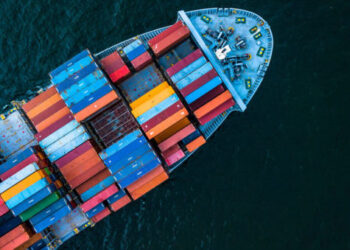Skuld P&I – Loss Prevention
Rice is a staple food for a majority of the world’s population. Each year, close to 450million tonnes of milled rice is produced, with over 50% of the production takingplace in Asia, mainly due to favorable climate conditions and low costs of production. Skuld P&I Club has published an extended Loss Prevention article, where the challenges of rice cargo are highlighted as well as how to dealwith the many forms of claims cases that may arise. Read some facts regarding the rice cargo transport as provided by Skuld P&I.
Cargo Handling
Rice is normally transported as break-bulk cargo in bags; usually 20 – 25 kg woven propylene bags, allowing for easy handling and stowage. Bagged cargo is susceptible to a number of problems, including wet damage, tearing and theft.
Moisture
One of the main causes of claims that arise when dealing with rice cargoes is its moisture content.When harvested, rice typically contains 20% – 28% moisture, depending on where it is grown and the atmospheric humidity at the time. It must be dried to about 12 – 14% within 48 hours of harvest before it can be loaded.
Mixing Different Moisture Content Rice
Often lower moisture content rice is mixed with higher moisture content rice to give an overall optimal moisture content.
The Importance of Hold Ventilation
This kind of damage is also very often caused by poor stowage and lack of protection of the bags from the ships’ bulkheads. It is, therefore, important to ensure all holds are adequately ventilated. This is especially important during a voyage to West Africa, where the air temperature and seawater temperature reduces, and day and night air temperatures differ substantially.
Rain and its consequences
Several cases have been reported in Douala, Cameroon in which considerable damage was caused by water infiltration into the ship’s holds during rain.
Temperature
Rice cargo is also susceptible to becoming mouldy if its temperature is greater than 25C.
Stowage and Dunnage
In respect to stowage, the cargo shall be stowed in a way that ventilation channels are not blocked. Proper dunnage shall be arranged and checked (plastic or bamboo) so as to ensure the cargo is sufficiently protected from the ship’s bulkhead.
Loading Port problems
India
There have been several incidents reported in which a serious problem of short landed bags of rice have occurred (between 3,000 and 5,000 bags on each voyage) when cargo is loaded in Kakinada, India.The Indian monsoons also pose a significant problem. A lot of vessels load bagged rice during the months of June to September, when rainfall in many parts of India can be quite heavy.
Vietnam
There have been arisen numerous cargo claims involving rice cargoes loaded in Ho Chi Minh City. Vietnam is a relatively new player in the large scale export of rice and production methods have not yet advanced significantly in the country.
Thailand
Recently (May 2013), the BIMCO Marine Department was informed that in an attempt to increase its export trade, Thailand intends to export older rice stockpiles harvested many years ago.
Myanmar
Myanmar is projected to become a major global rice exporter in years to come and will soon rival top exporters like Thailand, Vietnam and India.Myanmar rice usually have a high degree of humidity.
Loss Prevention
Below are a number of precautions a prudent carrier can take at the loading and discharge ports to minimize their exposure.
Pre-loading surveys
Below are a few pre-loading checks a prudent carrier can carry out to ensure the safe carriage of rice cargo:
- The vessel’s holds are clean and free of salt or other residues
- The hatch covers are weather tight
- There are adequate ventilation systems on-board which are not being obstructed
- Material used as dunnage should be clean and dry
- Adequate ventilation channels should be constructed
In addition to making sure the vessel can safely carry the cargo, independent pre-loading surveys can be conducted to ensure the following:
- Moisture tests on the cargo to ensure they are within the moisture content limits noted on the cargo quality certificate or as per the receivers requirement
- Independent tallying of cargo to avoid shortage claims
- Pre-loading inspection/ continuous tally on board to ensure that only sound bags are loaded into the vessel
- Visual quality inspection of the cargo to eliminate the loading of all damaged, cut/ torn and heavily stained bags
- Packing and marking inspections
- All bags are the same size. See if it is possible to get spare empty bags to put sweepings into, if bags get torn or damaged during carriage or discharge
Read more information in the Skuld P&I articleTransportation of Rice Cargo – Loss Prevention Article
Source: Skuld P&I Club

































































